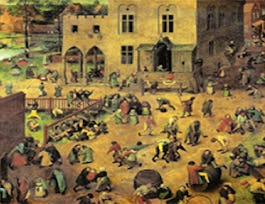If you love games and want to learn how to make them, then this course is your second step down that path. In this course you will learn the fundamentals of game design, including an understanding of the game world, storytelling, gameplay, user experience, and game technology. You will continue developing videogames using industry standard game development tools, including the Unity game engine. At the end of the course you will have completed a 2D Platformer game, and will be able to leverage an array of game development techniques to create your own basic games.



Game Design and Development 2: 2D Platformer
This course is part of Game Design and Development with Unity 2020 Specialization

Instructor: Brian Winn
Sponsored by Louisiana Workforce Commission
9,572 already enrolled
(113 reviews)
Recommended experience
Details to know

Add to your LinkedIn profile
5 assignments
See how employees at top companies are mastering in-demand skills

Build your subject-matter expertise
- Learn new concepts from industry experts
- Gain a foundational understanding of a subject or tool
- Develop job-relevant skills with hands-on projects
- Earn a shareable career certificate


Earn a career certificate
Add this credential to your LinkedIn profile, resume, or CV
Share it on social media and in your performance review

There are 4 modules in this course
Are you ready to take the next step in your journey into game design and development? In this module, we will introduce the theory and practice of this course. From a theoretical perspective, we will be using the Design, Play, Experience Framework across this course as a vehicle to discuss game design. From a practical standpoint, you will be creating your second game project in the course, a 2D Platformer. In the first part of the assignment, follow along with the tutorial videos introduced in this module. In the second part of the project, you will modify the game to make it your own.
What's included
20 videos3 readings
In this module, we will explore two important parts of the design, the game world and storytelling. The game world, simply put, is the world where the game takes place. At its simplest level, it is defined by space and time. But we will explore the game world across the physical, temporal, environmental, emotional, and ethical dimensions. In addition to the game world, we will also explore storytelling in games. There are two perspectives on storytelling in games, the “designer’s story” and the “player’s story”. The designer’s story is the storytelling that is designed into the game. The designer’s story can be used to set the stage, provide purpose and engagement, and convey content, among other things. The setting, character design, and narrative are the designers primary design tools. The storytelling that occurs during play combines the designer’s story with the interactions and choices the player makes. The resulting experience crafts the player’s story.
What's included
11 videos3 readings2 assignments
In this module, we will explore the next two layers of the Design, Play, Experience Framework, including gameplay and user experience. The gameplay layer defines what the player does in the game. That is, what choices the player can make in the game world and what ramifications those choices will have on the rest of the game. The gameplay layer is broken down into mechanics, dynamics, and affects. The mechanics are the rules that define the operation of the game world, what the player can do, the challenges the player will face, and the player’s goals. The dynamics are the resulting behavior when the rules are instantiated over time with the influence of the player’s interactions. The resulting experiences, or emotions derived in the player, are the affects. While the user experience layer is represented as the “deepest” layer in the framework, it is actually the most visible (or surface) layer from the perspective of the player where it is manifested through the user interface. The interface encompasses everything the user sees, hears, and interacts with and how that interaction happens (i.e., the control system.)
What's included
8 videos9 readings2 assignments
Everything in the Design, Play, Experience Framework is “grounded” on the technology that you are building the game upon. Overall, the capabilities and limitations of the technology and the resources required to implement the technology may greatly influence the design and should be considered throughout the design process. In this module, you will also finish up the 2D Platformer project, submit it for peer review, and peer review your fellow learners games. Finish the course strong!
What's included
8 videos2 readings1 assignment1 peer review
Instructor

Offered by
Why people choose Coursera for their career




Learner reviews
113 reviews
- 5 stars
80.53%
- 4 stars
11.50%
- 3 stars
5.30%
- 2 stars
0.88%
- 1 star
1.76%
Showing 3 of 113
Reviewed on Mar 12, 2022
It was overall a good course. I would have loved it better if we had made more things from scratch.
Reviewed on Apr 19, 2021
Absolutely love it, wish I could have realized Game development was my true calling years ago!
Reviewed on Nov 15, 2023
Great course! It can be used as a starting point to create a very nice game project, since it provides a lot of resources and knowledge. Definitely recommended!
Recommended if you're interested in Computer Science

Stanford University

Politecnico di Milano

Coursera Instructor Network

Open new doors with Coursera Plus
Unlimited access to 10,000+ world-class courses, hands-on projects, and job-ready certificate programs - all included in your subscription
Advance your career with an online degree
Earn a degree from world-class universities - 100% online
Join over 3,400 global companies that choose Coursera for Business
Upskill your employees to excel in the digital economy



